OCMA Reopens in New Location, Free to Public
- Oops!Something went wrong.Please try again later.
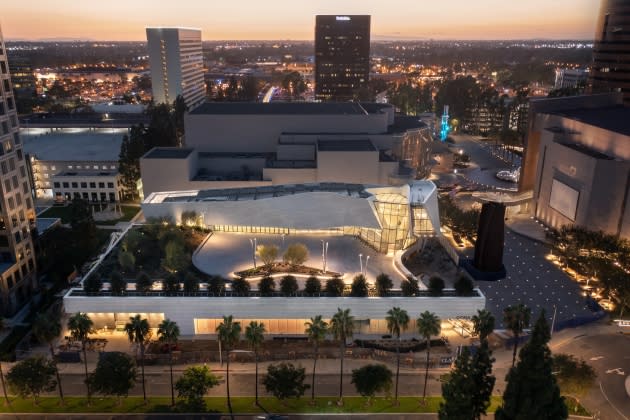
The Orange County Museum of Art unveiled its new home this past weekend when it opened to the public in Costa Mesa, California, on Saturday.
It’s now located on the Segerstrom Center for the Arts campus, with admission free for the first 10 years.
More from WWD
“There’s no economic barrier to experience our exhibitions and our programs,” says OCMA chief executive officer and director Heidi Zuckerman.
It’s thanks to Lugano Diamonds, a Newport Beach-based jeweler that made a $2.5 million donation to cover the cost.
“Our mission here is to enrich the lives of people in a diverse and fast-changing community…access to art is a basic human right,” Zuckerman says. “It’s not a privilege.”
Thom Mayne and Brandon Welling of Morphosis Architects are behind the design, aimed to be a communal structure, not “another shiny object,” says Mayne.
“They understood that what we wanted in a building most of all is an invitation,” Zuckerman says.
Three quarters of the site was left empty for “community engagement,” Mayne continued, incorporating a piazza. “It was about making relationships. It’s not just an art museum. It’s something much bigger than that.”
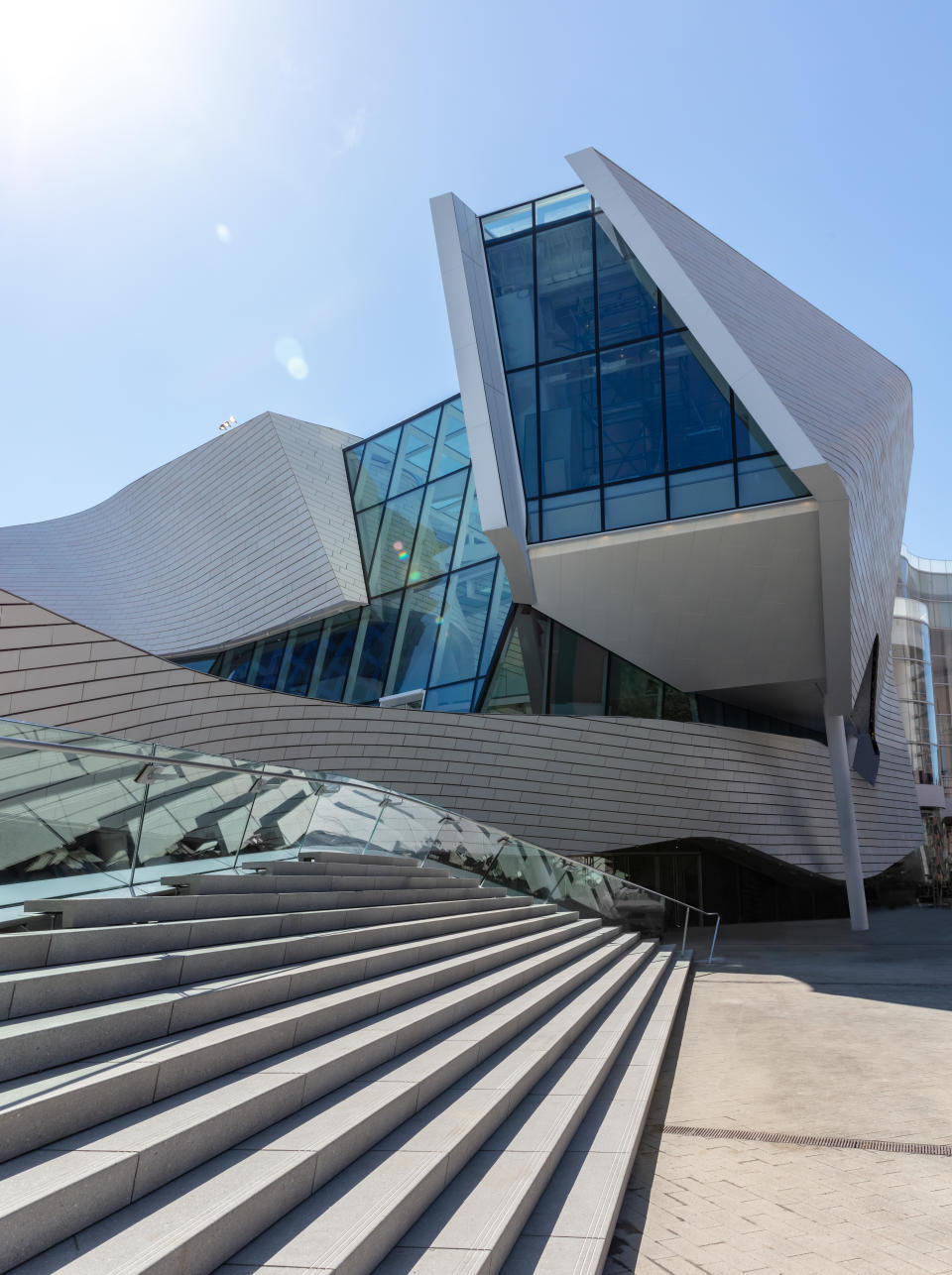
The museum was first known as the Balboa Pavilion Gallery, founded in 1962 by 13 women looking to exhibit modern and contemporary art. It became the Newport Harbor Art Museum before being renamed the Orange County Museum of Art in the ‘90s.
“Thirteen visionary and determined women in Newport Beach took it upon themselves to turn the second floor of the Balboa Pavilion into an art gallery for the public,” says Lucy Sun, board president of OCMA, recounting its history. “So began one of the earliest contemporary art museums in California.”
Upon entering inside, it’s hard to miss Please Do Not Enter in the wide, open space. It’s a concept store created by Emmanuel Renoird and Nicolas Libert. Here, everything is for sale, from the books to the apparel. There’s the unexpected — handbags by Charlie Le Mindu that are made of human hair — and the more conventional — home decor by L’Objet x the Haas Brothers. The owners are particularly proud of their collection of vintage Pierre Cardin items, including jewelry sourced from Paris.
“This was made for Jeanne Moreau,” says Libert, pointing to a Cardin dress. “There’s a story behind every piece.”
Price tags range from $10 to $15,000 (glass work by Sébastien Léon).
“We want to be a small museum within the museum,” Libert continues. “Art nourishes fashion. Design becomes a piece of art. A piece of art can be functional.…There are no limits, no borders.”
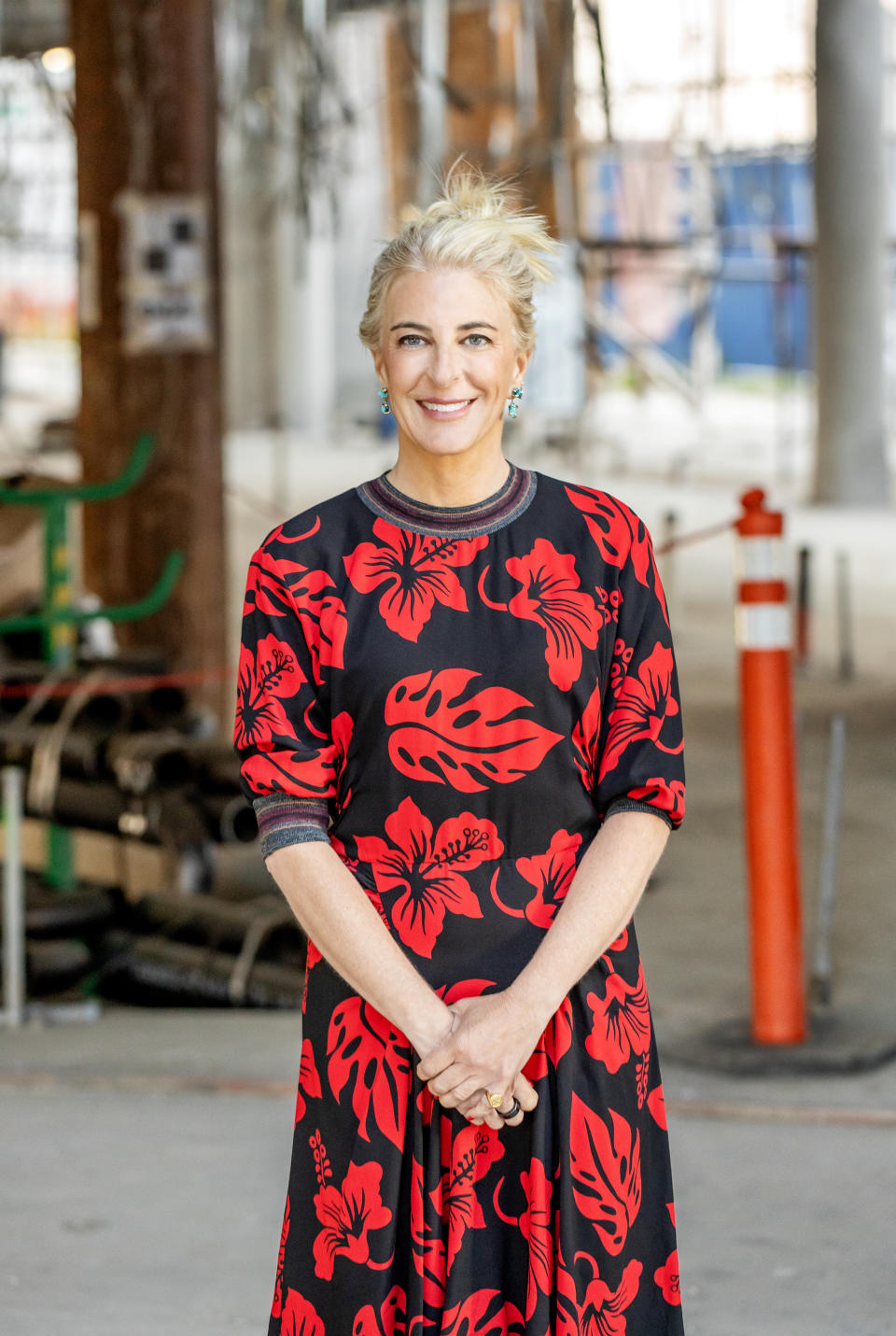
OCMA has five inaugural exhibitions on view.
“13 Women,” curated by Zuckerman, pays homage to the women who founded the Balboa Pavilion Gallery, featuring works by Alice Aycock, Lee Bul, Barbara Kruger, Joan Brown, Vija Celmins and Mary Corse. It will be presented in two rotations within a year.
There’s also the resurgence of “California Biennial,” titled “Pacific Gold.” Curated by Elizabeth Armstrong, formerly of OCMA, Essence Harden of the California African American Museum and Gilbert Vicario of the Phoenix Art Museum, it showcases more than 60 works by 19 artists (the likes of Morris Graves, Richard Diebenkorn and Joe Goode).
“Between the three of them during the past two years, they visited studios of more than 150 artists up and down the state of California, the coast, the desert, the cities, to seek out what artists are doing at this moment in time and sort of reflect on the world we share with them,” says OCMA chief curator Courtenay Finn. “The result is colorful. It’s full of materiality. It’s tangible. It’s really telling stories and looking at what we’ve experienced over the past three years and pointing to a way forward, a shared way forward together.”
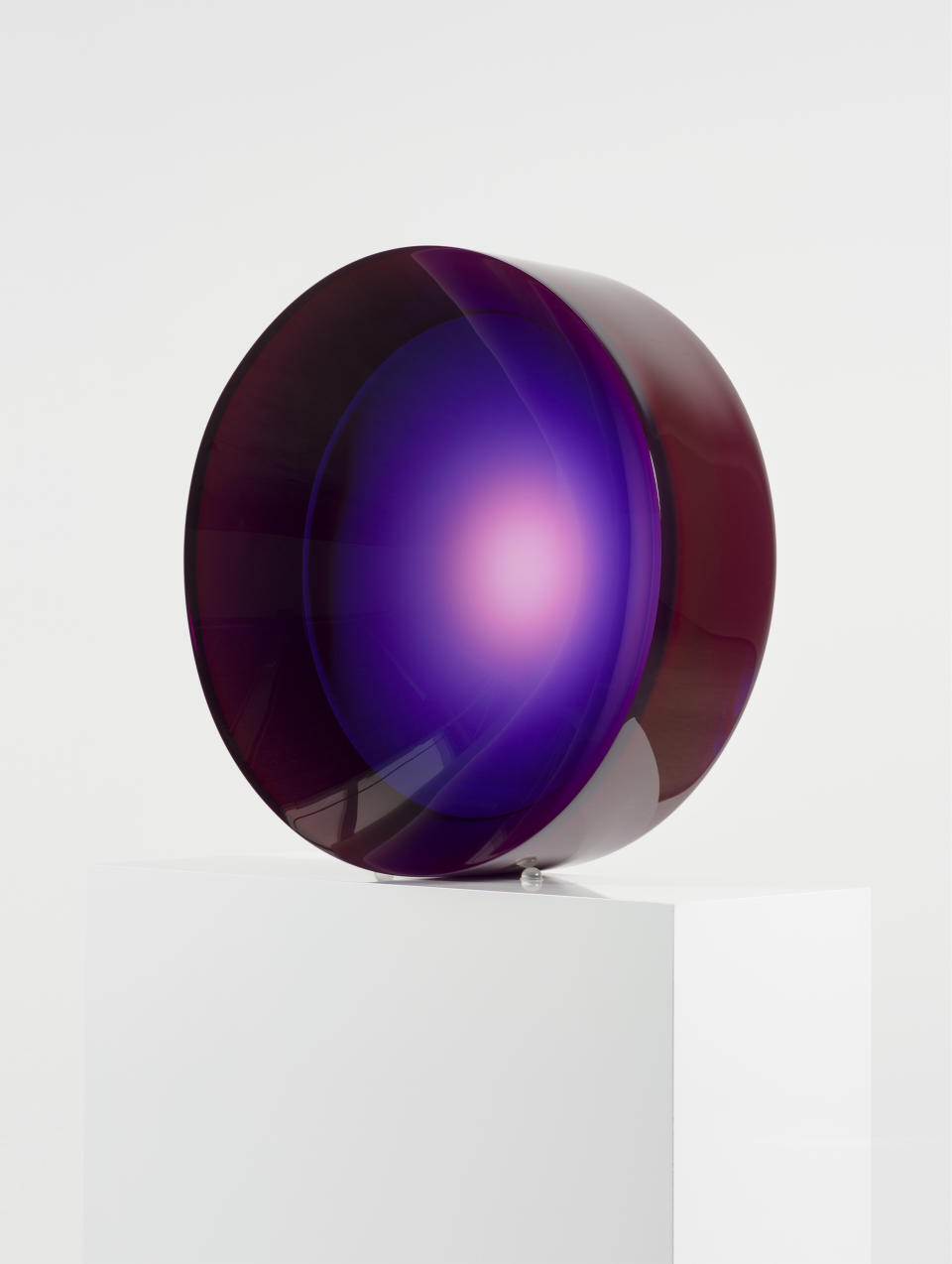
Fred Eversley’s sculpture exhibition, “Reflecting Back (the World)” (with his earliest work dating back to 1968), is found upstairs, while landscape architect Peter Walker’s project “Minimalist Landscape” is outside.
Outdoors, visitors are initially welcomed with a piece by Sanford Biggers. It stands tall — 24 feet wide by 16 feet long. Named “Of many waters…,” it’s a sculpture made of sequins, a “hybridized figure…an archetype of a European reclining male figure with a 19th-century Baule double-face mask,” explains Biggers, a Los Angeles native based in New York.
It lures passersby, shimmering in the Southern California heat.
“This was the culmination of several conversations and a visit or two to the space, very early stages, a lot of time with the physical model, a lot of time with the three-dimensional model of the museum and visits with hard hats when you just had to imagine what was coming next because it was nothing but infrastructure and a skeleton of different parts,” says Biggers, who was recently honored at OCMA’s second annual Art Sense Gala (which raised more than $2.1 million). “With the basic things that I was working with, I started to really consider the climate here, the light, being in California…thinking about billboards and ads and facades and Hollywood.”
Why does art matter? Biggers was asked at a media preview.
“Because the rest of the world doesn’t make sense,” he said.
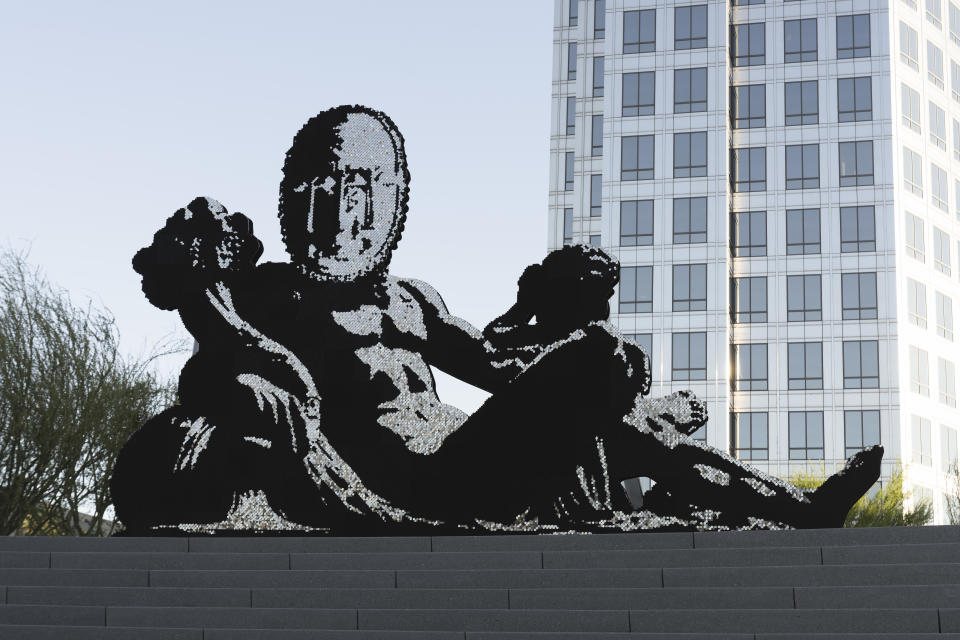
Best of WWD

